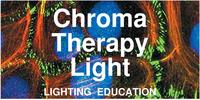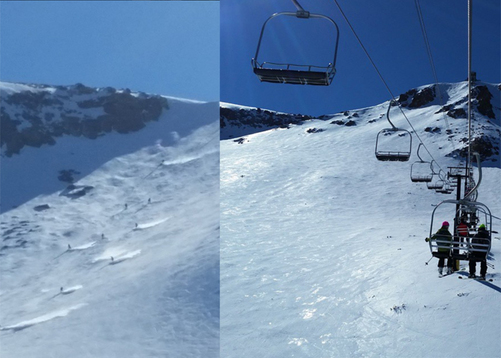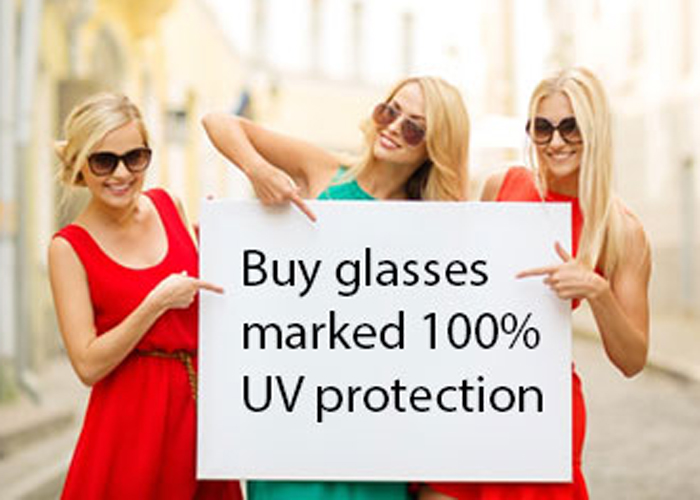|
Sunglasses - Learning Objectives
Mammoth Mountain Ski Slope
Too young for sunglasses in the early 1960s, I had spent that Spring day skiing on the bright sunlight slopes of Squaw Valley California. Slathered with Sea & Ski, the original sunblock that my mother gave us to put on our faces, eye protection from the Sun had yet to be recognized as important for children. At my age, of perhaps eleven years, I was allowed to spend the day skiing various mountain ranges with my father's best friend's daughter, a skier my same age. I need to send her this and find out if she too experienced a traumatic four-hour car ride home that evening from the sides of the slopes.
First I noticed my vision going kind of grey and yet it was still fairly bright outside, the sun had not even set. Next I noticed some kind of headache thing behind my eyes and on the sides between my eyes and my ears. These annoying sensations were followed by the alarming sense of the world going dark. Within an hour, almost black, the intensity of the experience was one that made me not want to open my eyes. My wise parents understood that the brightness of the snow had doubled the intensity of the sunlight reaching my eyes and after an entire day of staring at the white reflective slopes, the effect was of "temporary" snow blindness. Alarming as this may sound, I remember being at piece with the thought that it will probably all go away by tomorrow morning and quietly fell asleep in the backseat of the Buick Riviera driving back, like we did every weekend, from Lake Tahoe to our Bay Area home. Reassured by the return of my sight in the morning, by age 12 and the next ski season, I had purchased my first pair of sunglasses. By Trish Odenthal Photokeratitis - Snow Blindness
According to the American Association of Ophthalmologists, not only snow, but ice, water and sand can be highly reflective and damage our eyes. The damage may be temporary or lead to more permanent conditions such as cancer and cataracts.
Snow can double your UV exposure.UV 254 nm Reflectance from different materials - How is UV reflection different from Visible Light reflection? "Many surfaces reflect UV radiation and add to the overall UV levels you experience. While grass, soil or water reflect less than 10 per cent of incident UV radiation, sand reflects about 15 per cent, and sea foam about 25 per cent. Fresh snow is a particularly good reflector and almost doubles a person's UV exposure. Recurring incidences of snow blindness or photokeratitis in skiers emphasize that UV protective measures must take ground reflection into account." World Health Organization
https://www.who.int/news-room/q-a-detail/ultraviolet-(uv)-radiation And https://www.ccohs.ca/oshanswers/phys_agents/ultravioletradiation.html |
SunglassesUV - why is it important?
Ophthalmologists recommend that you wear 99 percent and higher UV (ultraviolet radiation)-absorbent sunglasses and a brimmed hat whenever you are in the sun for long periods of time. Proper sunglasses are key to protecting your eyes from sun-related damage, and they should be worn anytime you are outdoors, particularly under these circumstances:
Testing for UV and Polarization
How to test for UV and Polarization using a black light and cell phone.
https://www.youtube.com/watch?v=S939-dW2hYk 1921 Study on Snow Blindness
British Journal of Ophthalmology 1921 report. [2]
Footnotes
Photo Credits
|
- Home
-
- CHROMA Topics
- Color Spectrum - Light is Energy
- Color in Light
- Color in Nature
- Color in Paint
- Why does paint fade?
- Color Names & Meanings
- Color Phenomena
- Color Perception is Individual
- Color In Fashion
- Color for your home
- Color in Space
- Color Blindness
- Color Blind Interview
- Synesthesia
- Synesthete Deborah Borrowdale-Cox
- Synesthete Stephen Orr, BH&G Editor
-
- Circadian & THERAPY Topics
- Circadian Explained
- Circadian Ganglion Cells
- Circadian Melatonin
- Circadian Animals
- Circadian Research
- Autism & Lighting for the Spectrum
- Blue Light Dimming Apps
- Red Night Lights
- Vitamin D & Light
- SAD - Seasonal Affective Disorder
- Alzheimers and Light Therapy
- Photosensitivity - Light Sensitive Drugs
- Red Light Therapy
- Sleep & Lighting
- Dreams and Second Sleep
- NASA - Lighting in Space & Undersea
- Jet Lag
- Sunglasses
- Chakras
- Crystals, Minerals, & Gemstones
-
- LIGHTing Design Topics
- UV Germicidal Disinfection Light
- LED Lighting Facts Card
- CRI - Color Rendering Index
- LED TM-30
- LED Kelvin Color
- LED LPW
- LED Flicker
- LED Glare
- OLED - Organic LED
- Human Centric Lighting
- Lighting with Daylighting
- Lighting for Healthy Buildings & Zero Net Energy
- Lighting for Healthcare
- Lighting for Horticulture
- Lighting for Hospitality & LED Retrofits
- Lighting for Museums
- Lighting for Seniors & Low Vision
- Lighting Design Tips & Codes
- Parking Lot Lighting
- Solar Lighting for Humanity & World Health
- Davis Insectary Garden
- Santa Barbara Mesa Insectary Garden
- Home
-
- CHROMA Topics
- Color Spectrum - Light is Energy
- Color in Light
- Color in Nature
- Color in Paint
- Why does paint fade?
- Color Names & Meanings
- Color Phenomena
- Color Perception is Individual
- Color In Fashion
- Color for your home
- Color in Space
- Color Blindness
- Color Blind Interview
- Synesthesia
- Synesthete Deborah Borrowdale-Cox
- Synesthete Stephen Orr, BH&G Editor
-
- Circadian & THERAPY Topics
- Circadian Explained
- Circadian Ganglion Cells
- Circadian Melatonin
- Circadian Animals
- Circadian Research
- Autism & Lighting for the Spectrum
- Blue Light Dimming Apps
- Red Night Lights
- Vitamin D & Light
- SAD - Seasonal Affective Disorder
- Alzheimers and Light Therapy
- Photosensitivity - Light Sensitive Drugs
- Red Light Therapy
- Sleep & Lighting
- Dreams and Second Sleep
- NASA - Lighting in Space & Undersea
- Jet Lag
- Sunglasses
- Chakras
- Crystals, Minerals, & Gemstones
-
- LIGHTing Design Topics
- UV Germicidal Disinfection Light
- LED Lighting Facts Card
- CRI - Color Rendering Index
- LED TM-30
- LED Kelvin Color
- LED LPW
- LED Flicker
- LED Glare
- OLED - Organic LED
- Human Centric Lighting
- Lighting with Daylighting
- Lighting for Healthy Buildings & Zero Net Energy
- Lighting for Healthcare
- Lighting for Horticulture
- Lighting for Hospitality & LED Retrofits
- Lighting for Museums
- Lighting for Seniors & Low Vision
- Lighting Design Tips & Codes
- Parking Lot Lighting
- Solar Lighting for Humanity & World Health
- Davis Insectary Garden
- Santa Barbara Mesa Insectary Garden








